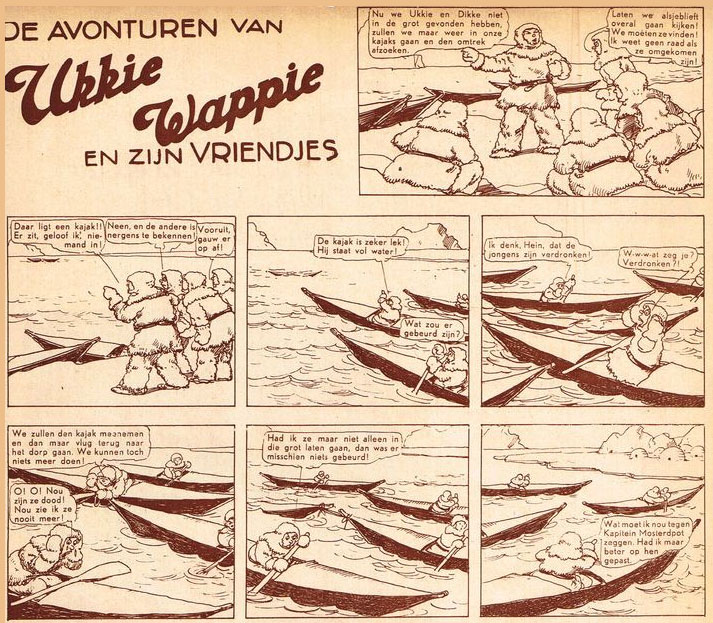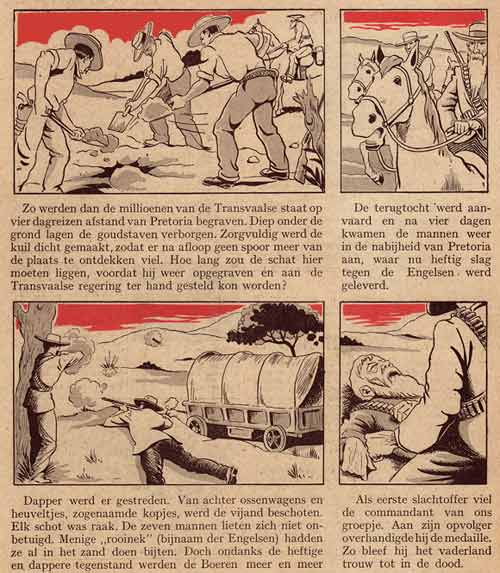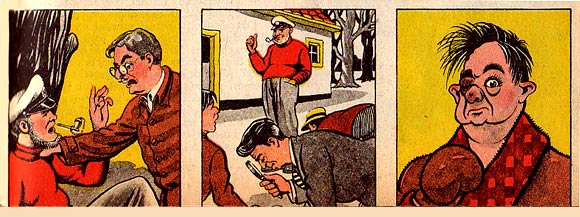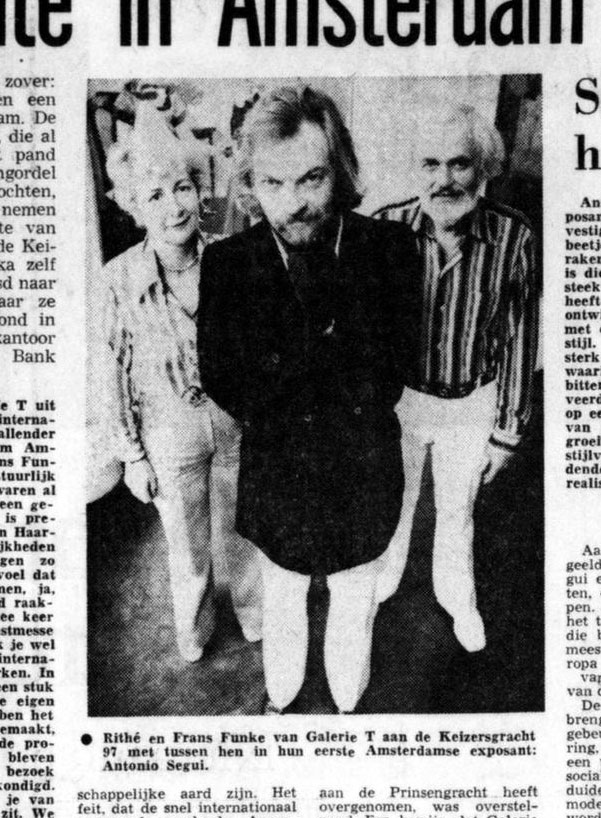'Kobus Knol en Thijs Slof', from: Weekblaadje voor de Roomse Jeugd, 31 January 1942.
Frans Funke Küpper was a Dutch comic artist, advertising illustrator and watercolor painter. From the 1930s through the 1950s, he made several one-shot comic serials for the Dutch Catholic magazines Kleuterblaadje and Roomse Jeugd. Out of all these comics, only two characters appeared in more than one story, Thijs Slof and Kobus Knol (1941-1942, 1946-1953). In Weekblaadje voor de Roomse Jeugd, Funke Küpper also illustrated 'Jan Jokkebrok' (1937-1940), written by his brother Theo Funke Küpper.
Early life and career
Franciscus Wilhelmus Aloysius Funke Küpper was born in 1908 in Rotterdam as the son of a German father and Dutch mother. Just like his older brothers Albert Funke Küpper (1894-1934) and Theo Funke Küpper (1904-1977), he inherited his artistic talent from his father, the Westphalian painter Bernard Anton Funke Küpper (1869-1955). The family also had three daughters. All three Funke Küpper brothers had prominent careers as magazine and newspaper cartoonists. Since they were only a couple of years apart, Frans' career evolved similarly to that of his brother Theo.
1933 episode of 'Ukkie Wappie', believed by Dutch comic historian Albert Tol to be drawn by Albert Funke Küpper.
By 1931, both brothers were employed as advertising designers by the Rotogravure Maatschappij in Leiden. At the Rotogravure, Frans Funke Küpper was possibly one of the anonymous staff artists working on the comic feature 'Ukkie Wappie en zijn vriendjes' in Het Weekblad voor U. This comic had started in the magazine as a translation of Martin Branner's U.S. newspaper comic 'Perry Winkle', but starting in November 1932, it was turned into a locally produced comic serial, which had little in common with the Branner original. In 1933, this feature was replaced by 'De Avonturen van Ukkie Wappie en Pukkie Waffie' by Marten Toonder.
During the 1930s, both brothers developed and illustrated the school-themed board game 'Wie Is De Knapste?' for Hausemann & Hötte, the company that later became game manufacturer Jumbo. For the publishing imprint Goede Lectuur in Amsterdam, Theo and Frans Funke Küpper later provided the illustrations for the fairy tale picture story book 'Sneeuwwitje'.
Catholic children's magazines
In 1934, Frans and Theo Funke Küpper moved over to the ad department of publisher De Spaarnestad in Haarlem. When the studio closed its doors in 1935, they became freelance illustrators and comic writers for the Catholic children's magazines Kleuterblaadje and (Weekblaadje voor de) Roomse Jeugd, the forerunners of the school magazines Okki and Taptoe. Frans Funke Küpper developed himself as a skillful comic artist, who made clever use of contrast, mastering both the schematic and realistic drawing styles.
'De Strijd om Kruger's Millioenen', a treasure hunt story set in South Africa about former president Paul Kruger's supposed millions.
Between 1937 and 1942, Frank Funke Küpper drew several picture story serials for Weekblaadje voor de Roomse Jeugd, which generally ran for a full year: 'Pukkie's Grote Avontuur' (2 January-26 December 1937), 'De Tweelingbroers Jan en Jaap Goochem gaan Rentenieren' (1 January-24 December 1938), 'Kobus Knol en z'n Ros' (7 January-30 December 1939), 'De Strijd om Kruger's Millioenen' (6 January-28 September 1940), 'De 12 Ambachten en 13 Ongelukken van Thijs Slof' (5 October-28 December 1940) and 'Het Duo Kobus Knol en Thijs Slof op Avontuur' (4 January 1941-7 February 1942). Of all these stories, only the thrilling 'Kruger's Millioenen' had speech balloons, the others ran with text captions.
'Jan Jokkebrok'.
From 1937 until the German invasion of the Netherlands in 1940, Frans Funke Küpper also illustrated the weekly column 'Jan Jokkebrok'. Written by his brother Theo, the feature told moralistic stories about a young boy who always gets himself into trouble by telling lies. After World War II, Albert Funke Küpper resumed his collaboration with the magazine, by now called simply Roomse Jeugd, creating the serials 'Kobus Knol en Thijs Slof op avontuur' (1946-1952) and 'Het Geheim van de Vliegende Schotel' (1952-1953). While most serials were one-shot stories, recurring characters by Funke Küpper were Kobus Knol and Thijs Slof, who first starred in a separate solo story before appearing together in two additional serials.
Gallery owner
After World War II, Frans Funke Küpper was mainly active as a painter, while taking a day job as a secondary school teacher. He made many trips abroad, including to France, Spain, Greece and Turkey. In 1966, Frans Funke and his French wife Rithé founded the Gallery T in Haarlem, with an annex called Gallery Jalmar in Amsterdam. In 1973, all activities of Gallery T were moved to a new location at the Amsterdam Keizersgracht. The gallery specialized in artists from the New Figuration movement. Besides showing work of young and upcoming Dutch artists like Kees Spermon, Siet Zuyderland, John Verberk and Age Klink, Gallery T also organized the first Dutch solo shows of international artists like David Hockney, Antonio Segui, Vladimir Veličković, José Gamarra and Michel Macréau. Health issues of Rithé Funke forced the couple to close the doors of their gallery in October 1977.
Death and legacy
Frans Funke Küpper passed away in January 1993 in Haarlem, as the last of the Funke Küpper brothers. In 2003, the comics district in the Dutch city Almere named a street after his character Thijs Slof.
Rithé (left) and Frans Funke (right) in their new Gallery T in Amsterdam. In the middle their first exhibitor, the Argentine painter and cartoonist Antonio Segui.








